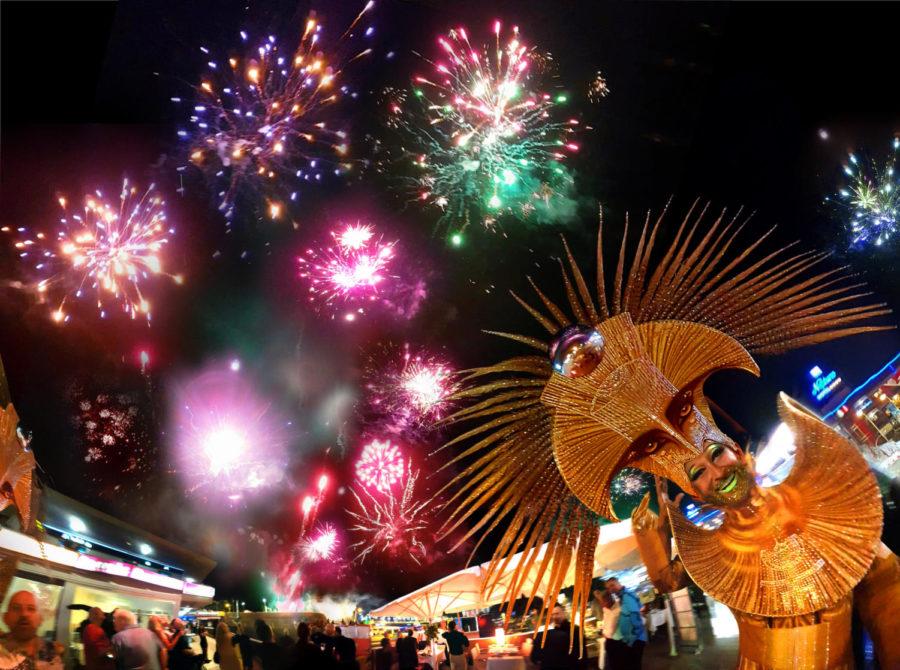New Year’s traditions around the world
People celebrate New Year’s Eve in Playa del Inglés, Spain.
December 10, 2018

This page was made possible in part by a grant from Year of Pitt Global.
Here in America, the new year is celebrated just after Christmas. From Dec. 31 through Jan. 1, celebrations with fireworks and champagne take over every city. As the entire nation tunes in on television to watch the ball drop at midnight from Times Square in New York City, other places around the world celebrate the new year with their own traditions.
Spain
In Spain, “Nochevieja” is the name for the traditional celebrations ringing in the new year. The term translates to “old night,” and some of the traditions are similar to that of the American New Year’s Eve and New Year’s Day celebrations. One tradition is to relax at home and watch a countdown on television — but when the clock hits midnight, things get interesting.
In Spanish culture, eating a dozen grapes at the start of the new year symbolizes good luck and safety for the 12 months to come. As the bells toll, eat one green grape on every ring. If by the end of the rings you’ve eaten 12 grapes — with none left hidden in your mouth — then you’ll have good luck in the new year.
Not just any green grapes will do, according to an article by NPR. The lucky grapes are kept covered by paper bags for two months while ripening on the vine, meaning the fruit’s final skin is thinner than conventional grapes — and if you want any chance of good luck, that could make the difference.
Iceland
In Iceland, there is a legal ban against fireworks. However, the ban is lifted just during the week of New Year’s so the celebrations can be up to par with traditions. As a result, the fireworks at midnight on New Year’s Day are memorable, especially in the nation’s capital city of Reykjavík.
Similar to New York City, thousands of locals and tourists make their way to the streets of Reykjavík for a wild celebration at the stroke of midnight.
China
The Chinese New Year follows the lunar calendar and tends to fall around the end of January or beginning of February each year. 2018 was the Year of the Dog, and 2019 will be the Year of the Pig. Lunar new year celebrations vary based on the location within Asia.
In China, the celebrations last 15 days and consist of traditions like making dumplings on the eve of the celebration, lighting fireworks, enjoying parades with lion and dragon dances and making traditional dinners all throughout the 15 days. The color red is worn throughout the celebrations, which is thought to fight off bad spirits and provide good luck. Parents will also give “hong bao,” or red envelopes, to children with money inside as gifts.
South Africa
Unlike the celebrations here in the northeastern United States, New Year’s Day in South Africa, specifically Cape Town, is a time for locals to hit the beaches. Cape Town shores break attendance records yearly on Jan. 1.
According to AfroTourism, an official tourism website for South Africa, concerts, parades, going to church and, of course, fireworks, are also staples of New Year’s celebrations in South Africa.
Scotland
Scots celebrate their new year on the same day as Americans, but use a different word for the celebration. “Hogmanay,” as the New Year’s celebrations are called in Scotland, pays special attention to gift-giving and paying thanks to the “first foot,” or the first guest of the New Year.
Hogmanay celebrations vary by region, from the traditional Viking longship-burning in Edinburgh to fireball swinging, meant to be a symbol of bringing new light to the year, in Aberdeenshire.








